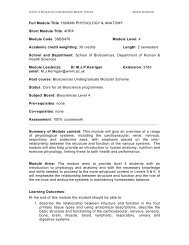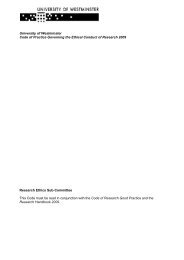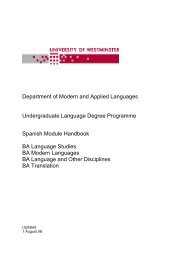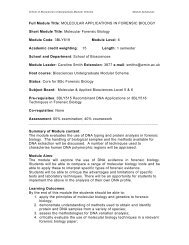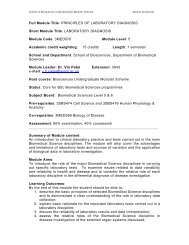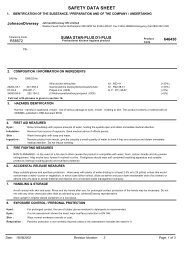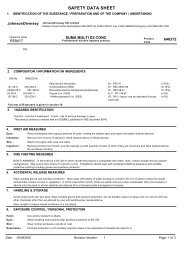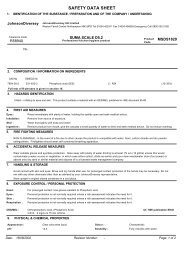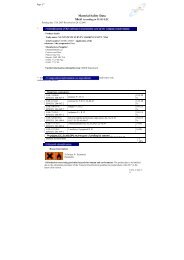CONTENTS 1. Introduction 1.1 Course Outline 1 1.2 Introduction ...
CONTENTS 1. Introduction 1.1 Course Outline 1 1.2 Introduction ...
CONTENTS 1. Introduction 1.1 Course Outline 1 1.2 Introduction ...
Create successful ePaper yourself
Turn your PDF publications into a flip-book with our unique Google optimized e-Paper software.
7. Interpret data derived from laboratory observations and measurements in terms of their<br />
significance and the theory underlying them.<br />
8. Present sound discussions and conclusions on the work, in the light of other published<br />
results or expected outcomes.<br />
9. Develop skills in literature research and presentation of experimental methods and<br />
results.<br />
Indicative syllabus content:<br />
Digital image representation and colour and tone spaces. The digital imaging chain. Sampling and<br />
quantization. Methods of digital image acquisition. Performance characteristics of image sensors and<br />
acquisition devices. Spectral integration and characteristics of colour spaces. Profiling and colour<br />
management tools. Image output techniques. Mechanisms and properties of output devices.<br />
Calibration of digital devices. Tone reproduction in digital systems. <strong>Introduction</strong> to image storage<br />
devices and file formats. <strong>Introduction</strong> to image compression. <strong>Introduction</strong> to digital image processing.<br />
Teaching and Learning Methods: The module is of 12 taught week’s duration with a 1 hour<br />
theory lecture and two hours supervised laboratory time per week. Teaching methods will include<br />
illustrated lectures, seminars, presentations and practical demonstrations. Practical work will involve<br />
supervised laboratory work that may involve both group projects and individual investigations.<br />
Written coursework may involve essays, derivations and calculations or computer-based exercises.<br />
Assessment Rationale:<br />
The examination is unseen and will test students’ ability to define concepts, derive results, describe<br />
applications and procedures and to analyse and comment on specific case studies. (Learning<br />
outcomes: 1, 2, 3, 4 and 7)<br />
Written <strong>Course</strong>work may consist of an essay or a number of problems requiring a detailed and<br />
accurate analysis at the appropriate level, with justifications and appropriate assumptions. Students<br />
may consult a range of sources and assignments are timed to enable valuable feedback. (Learning<br />
outcomes: 1, 2, 3, 7, 8 and 9)<br />
Laboratory work is assessed by written reports from practical assignments. The student must<br />
demonstrate an ability to interpret a brief, understand and apply appropriate experimental methods,<br />
interpret results based on relevant theory and present findings in a scientific and correct manner.<br />
(Learning outcomes: 1- 9)<br />
Assessment criteria:<br />
The extent to which the student is able to demonstrate an ability to:<br />
• Understand theoretical concepts and to apply them to problem solving using an analytical and<br />
systematic methodology.<br />
• Solve practical problems and test suitable hypotheses using appropriate theoretical and<br />
experimental skills and to critically appraise experimental outcomes.<br />
• Use appropriate procedures from theory to analyse data and interpret findings.<br />
• Plan, carry out and report on experimental investigations.<br />
• Comment critically on results obtained, with due regard for experimental errors and the<br />
significance of the result.<br />
• Use research/reference literature as appropriate.<br />
Assessment Methods and Weightings:<br />
Written Examination 40%<br />
Written <strong>Course</strong>work 20%<br />
Written Reports from Practical Assignments 40%<br />
DPI_Hbook 67 ©University of Westminster





